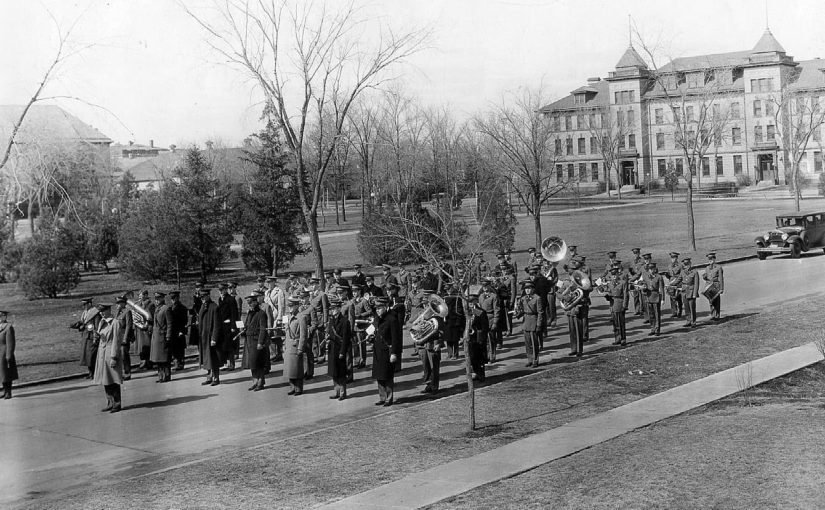What kind of team would a college have without a band?
Every team has their beloved mascot who gets the crowd excited and cheerleaders who cheer on the team with their amazing flips, but the most important of all is the band.
The Gold Star Marching Band as we know them now is “the pride of North Dakota.” What many people don’t know is the GSMB was created due to an accident.
In 1903, a local doctor under named Clarence Simeon got a job at North Dakota Agricultural College because his office burned down. He took in the opportunity to lead what was called the North Dakota Agricultural College Cadet Band, which then consisted of 14 members.
That same year, C.S. Putnam took over the band. His work landed them the third consecutive 100 percent rating, which gave the band its “Gold Star” status.
When Putnam passed away in 1944, the band started to disappear until William Euren became director in 1948. William grew the band’s numbers and it made it a closer version to what it is today.
After Euren retired in 1968, Roger Sorenson became the new director for the GSMB. Even though his run was short, Sorenson left a long lasting impression on the band. He left a sense of loyalty and trust that still exists today.
Orville Eidem took over in 1970 and was director for over 23 years. His efforts got the band a new facility, the Reineke Fine Arts Center, which replaced Putnam Hall and the Old Festival Hall in 1981.
Eidem retired in 1993. Wayne Dorothy became the new director of the band after being Eidem’s assistant. Then in 2007, the band got a upgrade. With their new uniforms and drums came Sigurd Johnson, who was hired as the new band director. From there, the GSMB only became more popular. Their numbers jumped from 83 in 2007 to 163 in 2008 to almost 200 today.
Johnson is the current director of the GSMB, and you can see him and his band create wonderful music that shows our pride at every Bison game.
At its core, the GSMB is all about a music and a love for NDSU, and that’s definitely something you can hear in the music.
